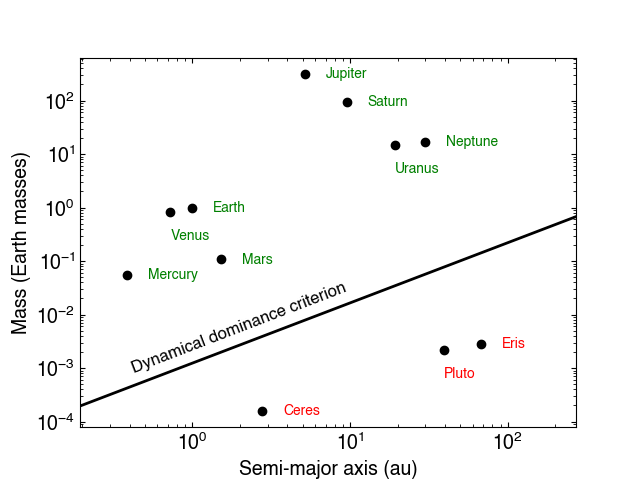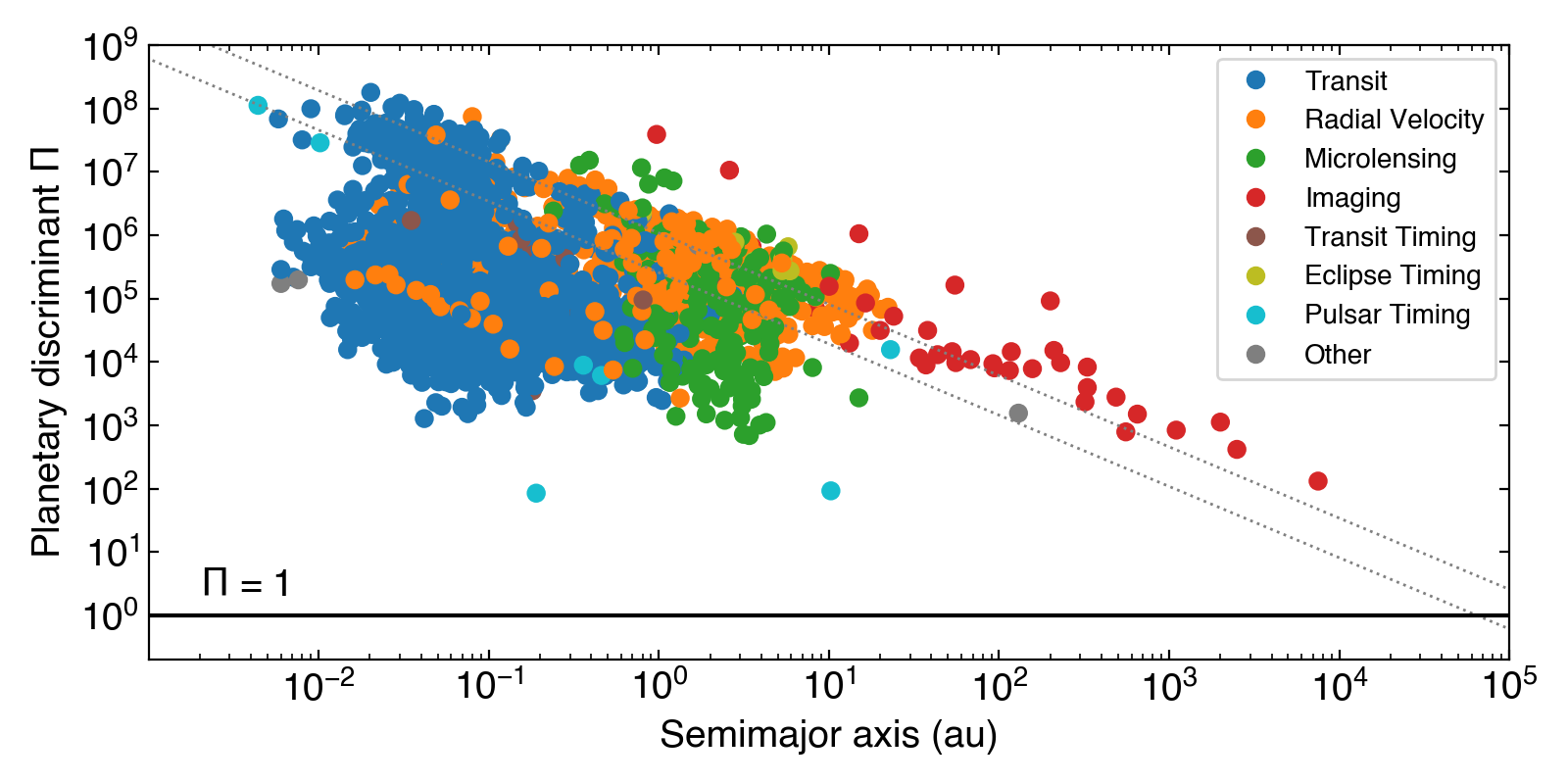Planet Definition Proposals
Introduction
The IAU definition of 'planet' (2006) needs improvement because it excludes exoplanets and because it is not quantitative. In 2015, I published a paper in which I proposed a quantitative, unified framework to define both planets and exoplanets. Since then, IAU Commission F2 has published a working definition of an exoplanet, which remains ambiguous because the lower mass limit is undefined. As a result, I (with Brett Gladman and Toni Yang) have submitted a paper with two proposals that we hope will encourage community conversations about fixing the flaws in the current planet definition.
Our proposals are motivated in part by the results of unsupervised clustering of Solar System bodies, which yields two useful conclusions that can guide the development of planetary taxonomy: (1) satellites are distinct from planets, and (2) dynamical dominance is a natural organizing principle for planetary taxonomy. In both cases, we found substantial gaps between groups, which are useful when classifying bodies into distinct groups. The gaps are illustrated in the two figures below:

Solar System bodies naturally cluster into two distinct groups, with satellites (S) in one group and planets (P) and trans-Neptunian bodies (T) in another group.

Planets and non-planets in the Solar System naturally cluster into two distinct groups, with a separation of three orders of magnitude between groups.
Proposed IAU-aligned Framework
Our first proposal is aligned with the spirit of IAU Resolution B5 and incorporates the working definition of IAU Commission F2. It reads:

In this formulation, clauses (a), (d), and (e) follow the recommendations from the working definition of IAU Commission F2. Clause (b) includes our proposal to define a lower mass limit. We encourage community conversations about all aspects of the proposal, including about the value of clause (c) and whether this clause could be eliminated (In most situations, dynamically dominant bodies have sufficient mass to reach hydrostatic equilibrium).
Solar System
When applied to the Solar System, our first proposal yields 8 planets,
consistent with the IAU definition:

IAU-aligned planet definition proposal applied to objects in the Solar System. All 8 planets are dynamically dominant.
Exoworlds
When applied to confirmed exoworlds, our proposal identifies only planets:

IAU-aligned planet definition proposal applied to objects orbiting stars other than the Sun. All objects discovered to date are dynamically dominant and qualify as planets with our proposal.
Planet Nine
Would the putative Planet Nine qualify as a planet within this framework? The answer is yes.
Proposed Simplified Framework
Our second proposal is a simpler mass-based framework that avoids some of the difficulties ingrained in current IAU recommendations. It also honors a gap in the mass distribution of Solar System bodies:

The mass distribution of Solar System bodies reveals a gap between the 8 planets and all other bodies.
Our second proposal reads:

Conclusions
Precise definitions are needed to communicate and organize thoughts. The IAU definition of "planet" has been criticized with good reason since 2006. Our community and the public deserve better definitions for such important astrophysical terms as "planet" and "satellite".
To facilitate further reflection on this important topic, we have provided an IAU-aligned proposal and a simpler proposal. These proposals are meant as a starting point for community conversations, and we welcome feedback on all aspects of both proposals (jlm@epss.ucla.edu).
References